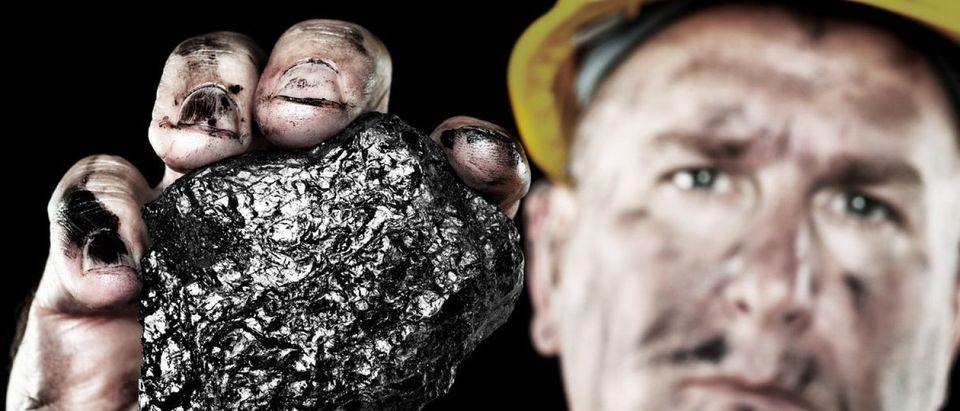Obama administration efforts to train laid-off coal miners and their spouses for the “jobs of the future” are turning out to be somewhat of a double-edged sword.
A new report by the Cleveland Federal Reserve Bank found some coal miners have successfully gotten jobs in other industries, but the report also hints that those re-employed miners are making way less than before.
The Cleveland Fed reported an electrical lineman program at Hazard Community and Technical College had successfully retrained 124 laid-off miners by fall 2015. That program had a job placement rate of 90 percent, but it had a couple drawbacks.
“Many graduates travel outside the region for work during the week and return on the weekends. Demand for the electrical lineman program is high (there is a two-semester waiting list) because students exiting the program earn, on average, $20 per hour,” the Cleveland Fed reported.
A $20 an hour wage comes out to a $41,600 annual salary. That’s a little over half the average $72,000 a year salary of Kentucky coal miners.
The U.S. Labor Department has spent $14 million to the Hiring Our Miners Everyday, or HOME, program in Eastern Kentucky where thousands of coal miners have lost their jobs, in part, due to increasing federal energy regulations.
It’s part of President Barack Obama’s plan to revitalize dying coal communities. Obama promised $35 million to help “communities and workers successfully adapt to changes in the coal industry and power sector.” Obama administration regulations have been blamed for many of the job losses across Kentucky and the rest of coal country.
Kentucky has been one of the hardest hit areas by the downturn in coal mining, losing 1,500 jobs in the first three months of 2016. That’s a 17 percent decline in coal employment.
Kentucky lost 5,188 coal jobs during from 2008 to 2013 — a 31 percent reduction in the state’s coal mine workforce.
So far the HOME program has “enrolled more than 3,000 laid-off coal miners and their spouses,” and 1,449 of them have gotten program support while undergoing retraining.
“More than 1,100 have obtained new employment, while 90 participated in internships through the HOME program,” the Cleveland Fed reported. “Feedback from employers who are hiring workers who have been through the HOME program has been positive, too; EKCEP staff have heard ‘universally rave reviews about coal industry workers.’”
Miners who have underwent jobs programs in Colorado also had to take jobs that paid less than the coal industry.
Colorado’s Labor Department recently gave a company $400,000 to retrain coal workers for solar industry jobs. The program is called Solar Ready Colorado, and it aims to “to train unemployed miners, veterans and workers in the oil and gas industry,” the Colorado Springs Gazette reported.
But again, the program is a double-edged sword. Some miners will likely find work, but they will have to take a huge pay cut.
Stuart Sanderson, president of the Colorado Mining Association, told the Gazette the “average mining job in Colorado paid $91,000 in 2015.” That’s compared to the up to $25 an hour, or $50,000, a year solar panel installers get paid.
Solar Energy International, which gets government grants to train solar workers, told The Denver Post in 2015 that installers get a “living wage” that ranges from $15 to $25 an hour — between $31,200 and $52,000 a year.
“It’s not the same as what you’re making in the coal mines, but there’s good opportunity for growth and other benefits,” SEI Executive Director Kathy Swartz told the Post. “And it’s a good job. Solar jobs aren’t going anywhere.”
Democratic presidential nominee former Secretary of State Hillary Clinton plans to vastly expand green energy job training programs. She’s pledged $30 billion to coal country for economic revitalization and job training.
“But we can’t ignore the impact this transition is already having on mining communities, or the threat it poses to the healthcare and retirement security of coalfield workers and their families,” according to Clinton’s plan.
“This is particularly true in Appalachia, where production has been declining for decades, but impacts are beginning to be felt in the Illinois Basin and Western coalfields as well,” according to the plan.
Follow Michael on Facebook and Twitter
All content created by the Daily Caller News Foundation, an independent and nonpartisan newswire service, is available without charge to any legitimate news publisher that can provide a large audience. All republished articles must include our logo, our reporter’s byline and their DCNF affiliation. For any questions about our guidelines or partnering with us, please contact licensing@dailycallernewsfoundation.org.


